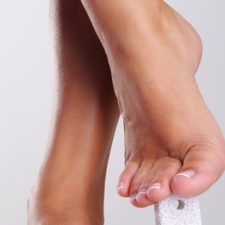
Calluses (that the podologists call callosities) develop due to repeated friction on any part of the skin. This is how the body uses dead skin cells to build a barrier protecting the skin against friction by a foreign object.

Calluses (that the podologists call callosities) develop due to repeated friction on any part of the skin. This is how the body uses dead skin cells to build a barrier protecting the skin against friction by a foreign object.
Calluses are bigger and thicker than corns and are yellowish. They are usually located on the soles and heels.
Many foot calluses and corns develop due to tight footwear. If callosities recur on a regular basis in the same location – check if your shoes are not the cause. If you cannot move your fingers inside the shoes, it is very likely that they are improperly fitted. Callosities also develop on the distal part of the sole when wearing high heels. If calluses are not caused by wearing uncomfortable shoes, the reason they form may be foot defects. Then, special cushions are used.
Are you standing long hours on flat and hard ground or wearing tight shoes most of the day? Your feet are exposed to callus formation. You should moisturise your feet with a special cream even twice daily, and wear socks and shock-absorbing cushions. To prevent callous formation, remove dead skin regularly using a file, a grater or a pumice stone, and use a scrub.
Once a thick layer of the calloused skin is formed or you simply lack patience for buffing off all dead skin, you may go and have your pedicure done at the beauty salon where an electric file with a special tip is used to remove your thickened skin.